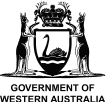Westport has partnered with the Western Australian Marine Science Institution (WAMSI) to deliver the $13.5 million WAMSI-Westport Marine Science Program. This 3-year program is developing the latest data, information and modelling on the complex environmental systems and community values associated with Cockburn Sound.
Project 3.1: Water and Sediment Quality Monitoring
Research Theme: Water and sediment quality
Researchers: Celeste Wilson and Krzysztof Wienczugow, Murdoch University
Publication Date: October 2023
Developing a baseline understanding of water and sediment quality
Cockburn Sound has for many decades been a heavy industrial area, co-existing with recreational uses.
There have been substantive efforts since the 1990s to improve practices and procedures in and around the Kwinana Industrial Area to reduce and improve the quality industrial wastewater discharge into Cockburn Sound.
With planning for the proposed port facilities moving from concept design towards more detailed planning and development, there was a need to understand the sediment quality in Cockburn Sound and Owen Anchorage, which will likely be disturbed during the construction of a new channel and breakwater.
Sediment samples from 22 sites were collected for laboratory testing. The results indicate that the median concentration for each contaminant did not exceed environmental quality guidelines. This included metals/metalloids, hydrocarbons (TPH and PAH), tributyltin, herbicides (diuron and irgarol), and PFAS. In fact, individual site concentrations did not exceed the lower environmental quality guidelines set by the Environmental Protection Authority for any contaminant.
How Westport will use this report
This report provides an initial understanding of current sediment contamination in the Sound, reassurance about impacts when sediment is disturbed during development, and a baseline for monitoring sediment quality into the future. Understanding this will help us support the long-term health of Cockburn Sound.
You can read the full report here.





